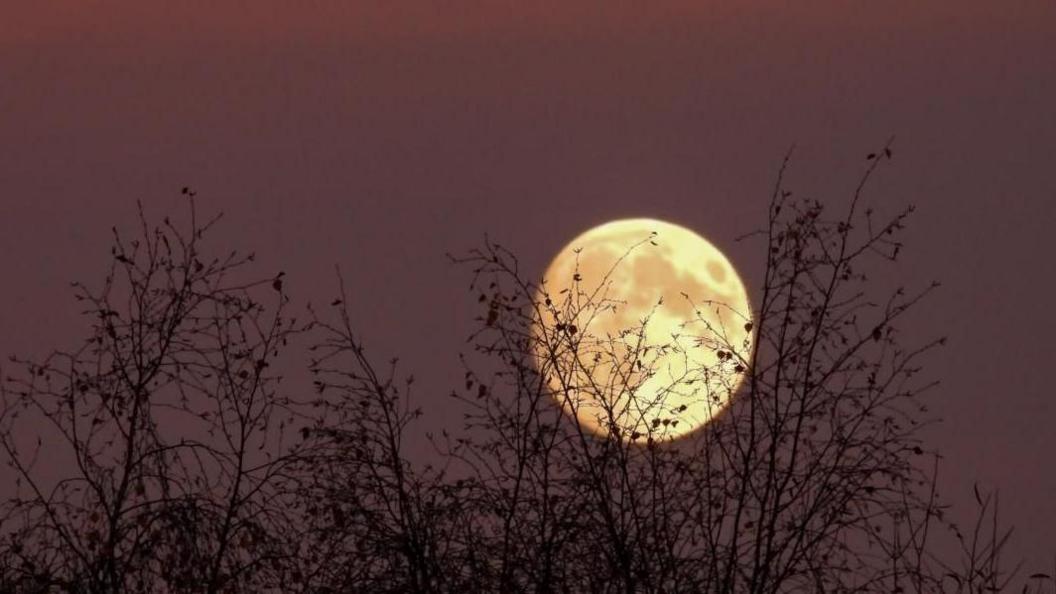November full Moon is last chance to see supermoon in 2024

- Published
A supermoon will appear in our skies on Friday night.
The full Beaver Moon rises in the UK at around 15:30 GMT on 15 November and will mark the end of a run of four consecutive supermoons.
It will not be quite as bright as last month's Hunter's supermoon but should still provide an impressive spectacle for sky gazers.
You will want to keep an eye on the forecast though as cloud may obscure the view in some places.
Why is it called the Beaver Moon?
Full Moons throughout the year are given names that reflect what is happening in nature.
November's full Moon is called the Beaver Moon, probably because beavers are particularly active at this time of year as they prepare for the winter months ahead.
Another interpretation is that Native American tribes would set beaver traps before the swamps froze, ensuring a supply of warm winter furs.
It is worth saying that the names have nothing to do with the way the Moon looks - it is not going to resemble a beaver in the night sky.
But it is going to be a supermoon.
The nearly full Beaver moon on Thursday night in Oxfordshire
What makes a supermoon so super?
The Moon's orbit around the Earth is not a perfect circle - in fact it is elliptical, meaning its distance from Earth at any given time will vary.
The Moon's furthest point from the Earth is known as apogee. When it is at its closest we call it perigee.
And when the full Moon - which occurs roughly every 29.5 days - coincides with the Moon's perigee, it appears bigger and brighter than usual and so we call it a supermoon.
Supermoons are not particularly rare. In fact there are generally three or four each year. This year has already brought three consecutive supermoons - the Blue moon in August, September's Harvest moon and the Hunter's moon in October, which was the brightest of all.
The Beaver Moon will not be quite as bright but it still qualifies as a supermoon.
It will be almost 14,000 miles (roughly 23,000km) closer to Earth than normal, with astronomers saying it will look around 14% larger and 30% brighter than usual - although it may be hard to tell the difference with the naked eye.
The next supermoon does not occur until October 2025 - so it will be worth catching a glimpse of this one if you can.
What is the weather forecast?
Friday night may turn out to be a little frustrating for some.
Large areas of cloud are likely across many parts of the UK, lingering for much of the night across parts of Northern Ireland and northern England.
Southern England, East Anglia, the Midlands and Wales may start the evening with clear skies before clouding over later. Conversely much of Scotland is likely to start off cloudy before skies clear from the north overnight.
But you may only need a small gap in the clouds to witness the Beaver supermoon - and you can keep up to date on the prospects of that happening where you are on the 大象传媒 Weather website and app.
- Published20 September 2021
- Published24 February
- Published15 November